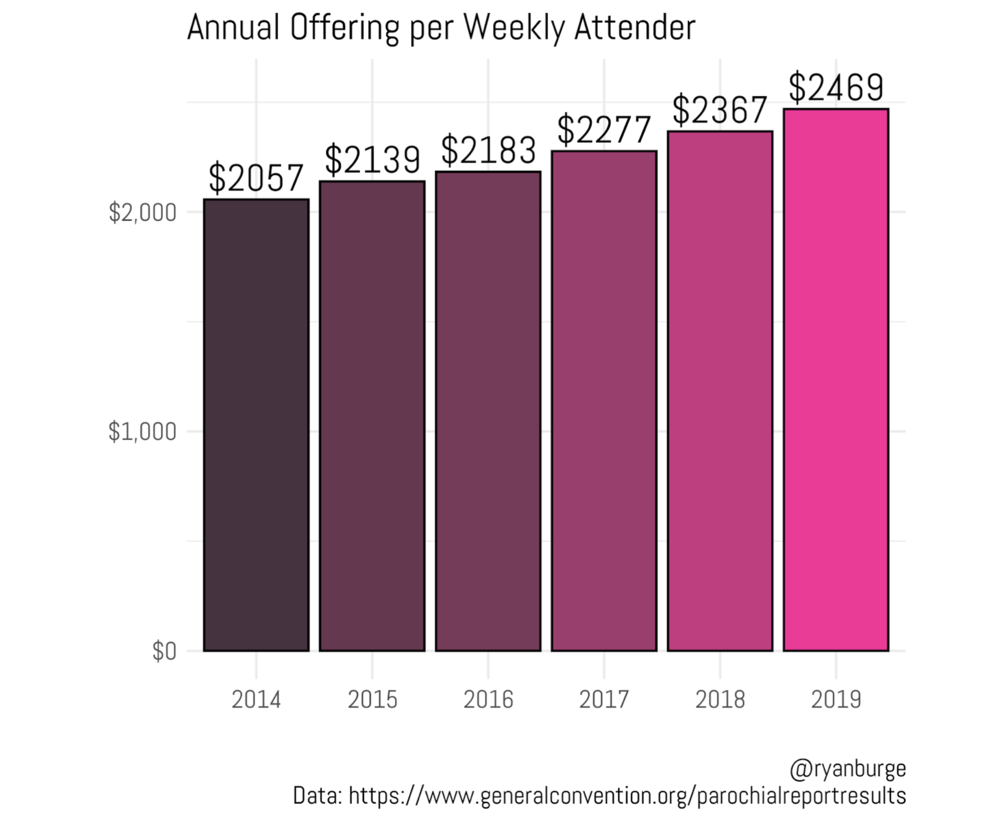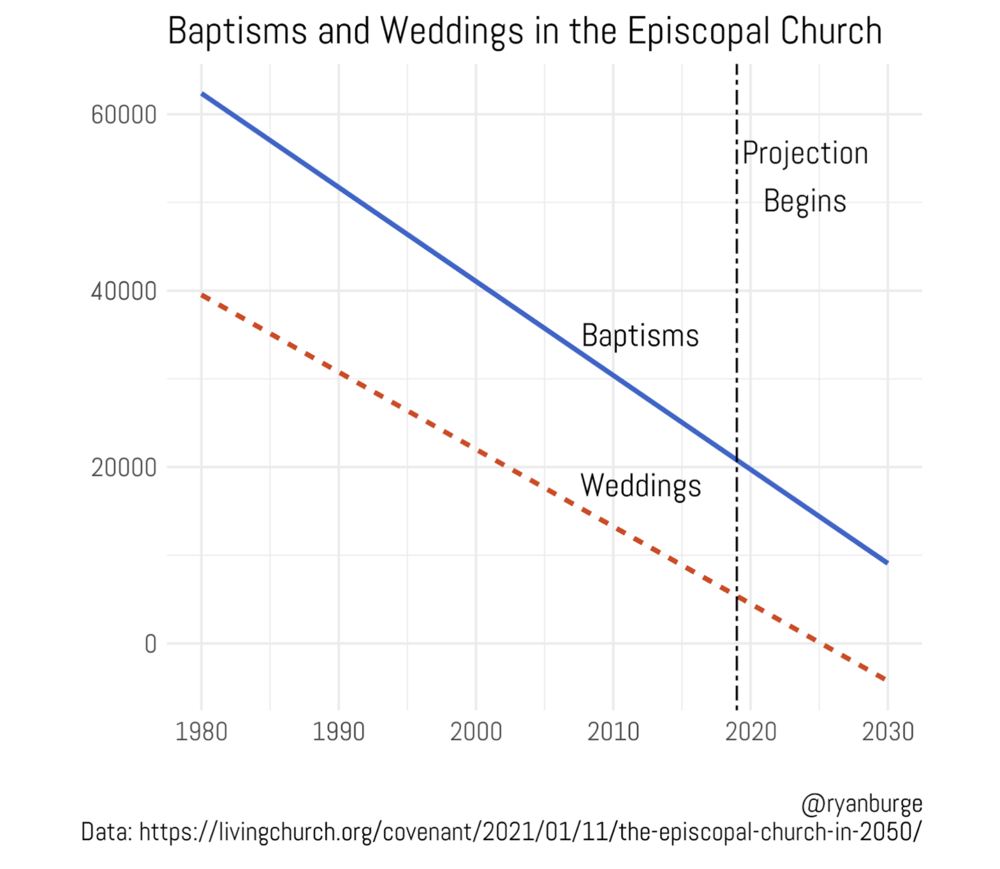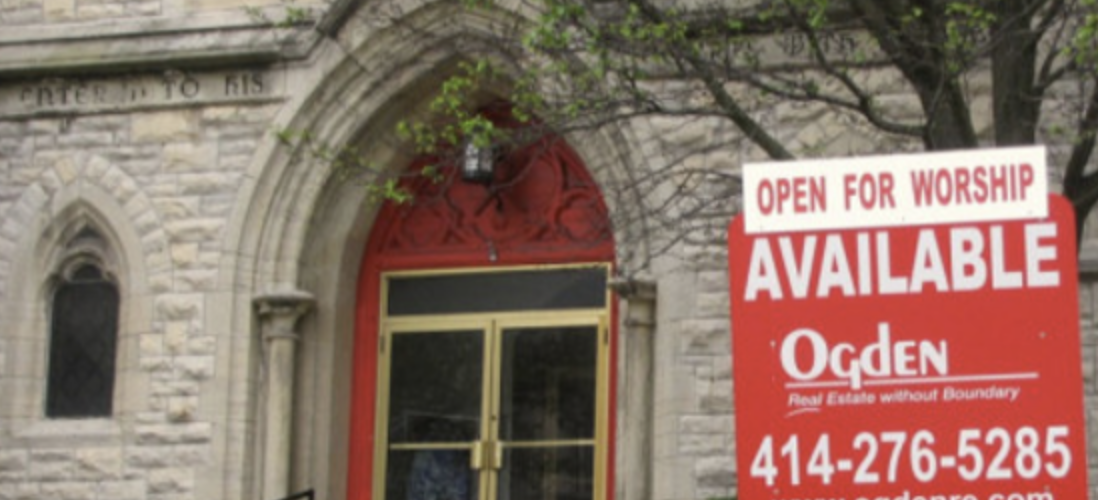
Last November, I wrote a post for Religion in Public with the title, “The Data is Clear — Episcopalians are in Trouble.” In it, I used survey data to paint a portrait of a denomination that was on the brink of collapse.
One of the most troubling things about the future of the Episcopal Church is that the average member is incredibly old. The median age of an Episcopalian in 2019 was sixty-nine years old. With life expectancy around 80, we can easily expect at least a third of the current membership of the denomination to be gone in the next fifteen or twenty years. That’s problematic when membership has already been plummeting for decades.
But, I came across some data in the last few weeks that I just had to look at in more depth.
Before I get into the graphs I have to give some serious kudos to the data team that works for the denomination. I have looked at the websites of all kinds of Baptist, Methodist, Presbyterian and Catholic traditions over the last few years. The Episcopalians blow them all out of the water in terms of accessibility and ease of use.
Don’t believe me? Well, they have an interactive dashboard of all their churches in the United States. You can sort based on a map, church size, or amount of offering. It’s incredible and can be accessed at this link.
Let’s get down to it, though. How many people actually attend an Episcopal church on an average Sunday? I grabbed a PDF of their membership reports from here and did some quick analysis of the national trends.
In 2009, 725,000 people attended an Episcopal church on an average weekend. According to their own data, the Episcopal Church has about 1.8 million baptized members. (The denomination’s membership peaked at 3.4 million in the 1960s.) Thus, about 40% of current members attend on a regular basis. That’s been declining steadily over the last decade. A typical year sees attendance dip by 25,000-35,000 people. That represents a 2-3% year-over-year decline.
By 2019, the weekly attendance was 547,000. In percentage terms, the Episcopalians have seen their attendance drop by a quarter in just the last decade.
But, that doesn’t tell the whole story about the future of the Episcopalians.

Churches need money to operate and on this measure there’s plenty of reasons to be optimistic. The Episcopalians calculate what they call “plate and pledge,” which is an accounting of not just money dropped in the offering plate, but also the amount that members have pledged to donate in the future. We can reasonably assume that not all pledged donations will eventually be collected, but it’s still a decent metric to gauge financial health.
There’s little reason to expect that the money is going to run out for the Episcopalians anytime soon. In fact, the total amount of plate and pledge has actually risen between 2014 and 2019. In 2014, the denomination received about 1.3 billion dollars from their members. By 2019 that had increased by about fifty million dollars. That’s surprising given that the overall attendance in the tradition has declined during that same time period.
Using both the weekly attendance figures and the “plate and pledge” numbers, I calculated how much the average attender gave in their annual offerings between 2014 and 2019 — these numbers are truly stunning. In 2014, the average Episcopalian gave $2057. By 2019, that figure had increased nearly four hundred dollars per year to $2469. That represents a 20% increase in donations in just six years, while inflation has only increased by 13.7%.
Now, there are two possible explanations that I can think of to explain this trend.
The first is that those that remain in the Episcopal Church are incredibly committed to the cause. They are the ones who freely give each Sunday. Thus, the ones who gave little are no longer Episcopalians, while the big givers are still faithful.
The other is that many Episcopalians have died in the last few years and they have given a portion of their estate to the church. This would obviously drive up the overall “plate and pledge” donations and possibly inflate these numbers. It may be the case that the average offering in the plate is actually smaller, but that is supplemented by these larger donations from the wills of those who have died in recent years.

Obviously, that’s a good news-bad news equation.
Despite the fact that the coffers of the Episcopal Church are staying full through sustained donations from members, there is plenty of reason to be very concerned about the future of the denomination. In an article for The Living Church, David Goodhew presented some numbers about weddings and baptisms occurring in the Episcopal Church that will be disheartening for members.
In 1980, the Episcopal Church reported 38,913 weddings. By 1990, that had dropped to 31,815. In 2019, that had declined again to just 6,148. Baptisms of children are only doing marginally better. In 1980, there were over 56,000 but by 2000 that dropped to 46,603. By 2019, that had declined by more than half to just 17,713.
Using that data I project what both figures would look like in 2030, which is visualized in the above chart. According to the trend lines there will be no weddings in the Episcopal church in 2025. By 2030, the number of baptisms will drop to below 10,000 per year.
The implications for the Episcopalians are dire.
CONTINUE READING: “The Death of the Episcopal Church is Near” by Ryan Burge at Religion in Public.
FIRST IMAGE: Illustration drawn from coverage at VirtueOnline.org










